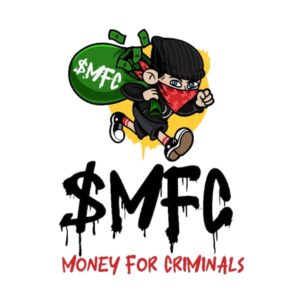Ah, NFTs. The latest buzzword in the digital art world. They’re unique, they’re trendy, and they’re making headlines. But with great popularity comes great responsibility, and unfortunately, some individuals have taken advantage of this trend to perpetrate scams and fraudulent activities. In this article, we’ll dive into the world of NFT scams and reveal the tricks used by scammers to deceive unsuspecting artists and collectors. We’ll also provide you with practical tips on how to avoid falling victim to these scams and protect yourself from digital art fraud
What Are NFT Scams?
Now that we have established the growing concern surrounding NFT scams, it’s important to understand what they are and how they operate. NFT scams refer to any fraudulent activity that targets the NFT market, whether it be selling fake NFTs, cloning authentic ones, or phishing schemes that trick buyers into revealing their personal information.
It’s important to note that not all NFTs are created equal, and scammers often take advantage of this by creating fake NFTs that mimic the appearance of legitimate ones. They may also use phishing tactics to trick buyers into revealing their private keys, allowing scammers to gain control over their NFTs. These scams can be devastating for artists and collectors alike, leading to financial loss and reputational damage.
“NFT scams are like a bad game of whack-a-mole – as soon as one is taken down, another pops up in its place.”
So how can you protect yourself from falling victim to NFT scams? The key is to remain vigilant and informed about the latest scam techniques. In the following sections, we will provide practical tips on how to spot and avoid NFT scams, as well as a real-life case study of a notorious NFT scam.
Spotting NFT Scams
Now that we know what NFT scams are and how they operate, let’s talk about how to spot them before they catch us off-guard.
One of the biggest red flags is encountering unrealistic promises. If a seller claims their NFT will skyrocket in value overnight or guarantees massive returns, it’s likely a scam. No one can predict the unpredictable world of digital art, so beware of exaggerated claims.
“If it sounds too good to be true, it probably is.”
Another thing to watch out for is suspicious sellers. Always research the person or organization selling the NFT and look for reviews or feedback from previous customers. If there’s no online presence or the seller’s information seems vague or incomplete, it’s best to steer clear.

A lack of transparency is also a major warning sign. If the seller can’t provide clear information about the NFT’s origin, ownership, or authenticity, it’s time to walk away. Don’t be afraid to ask questions and demand proof of legitimacy.
“Trust, but verify.”
Finally, always do your research before making any purchases. Check multiple sources and compare prices and offerings. Don’t rush into anything and seek professional advice if you’re uncertain. It’s better to be safe than sorry when it comes to NFT scams.
Avoiding NFT Scams
Now that we know what NFT scams are and how to spot them, let’s talk about avoiding them altogether.
First and foremost, always use trusted platforms and marketplaces when buying or selling NFTs. These platforms have strict security measures in place to protect their users from fraud.
When dealing with individual sellers, be sure to do your research and verify their reputation. Look for reviews or feedback from previous customers and check their social media presence to ensure they are legitimate.

Remember, if something seems too good to be true, it probably is. Don’t fall for unrealistic promises or low prices that are too good to pass up. These are often tactics used by scammers to lure in unsuspecting buyers.
If you’re unsure about the legitimacy of an NFT, seek professional advice. There are experts in the field who can help you determine whether an NFT is authentic or not.
Lastly, stay informed about the latest scam techniques and always exercise due diligence. The NFT market is still relatively new and evolving, so it’s important to be vigilant and protect yourself from potential fraud.
Case Study: Kush Kriminals and the NFT Scam Disguise
Now, we have all heard of creative ways to deceive unsuspecting buyers, but nothing quite compares to the Kush Kriminals NFT scam. These fraudsters ripped off millions of dollars from eager collectors who thought they were purchasing legitimate NFTs.
Using their expertise in social engineering and digital art, the Kush Kriminals managed to clone authentic NFTs and sell them on the black market. They even created fake social media accounts to lure buyers into their trap.
Their scheme was so elaborate that they even went as far as minting fake artworks with identical metadata and uploading them to reputable marketplaces. Many buyers fell for the scam, and nobody suspected a thing until it was too late.
“The Kush Kriminals NFT scam serves as a reminder that we need stricter regulations in the NFT market to prevent fraudulent activities from harming honest artists and collectors.”
Image alt tag: Kush Kriminals NFT fraud illustration

Ensuring Authenticity in the NFT Market
Now that we are aware of the potential risks associated with NFT scams, let’s dive into how we can ensure authenticity in the NFT market.
One of the most promising solutions is the use of blockchain technology. By utilizing blockchain, we can eliminate the possibility of counterfeit NFTs. Blockchain provides a decentralized and transparent record of all NFT transactions, making it difficult for scammers to create fake NFTs. With blockchain, we can easily verify the provenance, ownership, and authenticity of NFTs.
Moreover, industry experts are currently working on establishing standards and certifications for authentic NFTs. These certifications will help identify legitimate NFTs and promote trust in the market. As more NFT projects emerge, certification programs will provide buyers and sellers with a reliable means of verifying the authenticity of NFTs.
“Ensuring authenticity is crucial for the growth and sustainability of the NFT market. By using blockchain technology and developing certification programs, we can create a more secure and trustworthy market for NFT enthusiasts.”
With the increasing popularity of NFTs, it is crucial to prioritize authenticity and protect ourselves from potential scams. By staying informed and utilizing available resources, we can safely navigate the exciting world of digital art without falling victim to fraudulent schemes.

Conclusion
Well folks, we’ve reached the end of our journey through the shady world of NFT scams and digital art fraud. It’s been a wild ride, but we hope you’ve gained some valuable insights into how to navigate this tricky market.
Remember, when it comes to NFTs, trust but verify. Always do your due diligence before handing over your hard-earned cash. Keep an eye out for those red flags, like unrealistic promises and dodgy sellers, and be sure to consult trusted sources before making any purchases.
And hey, if you’re feeling overwhelmed, don’t worry. We’re all in this together. The NFT market may be new and uncharted territory, but we’ll get through it – one authentic NFT at a time.
Until next time, stay safe, stay savvy, and don’t let those Kush Kriminals get their grubby hands on your digital art.
FAQ
Q: What are NFT scams?
A: NFT scams refer to fraudulent schemes that target the growing market of non-fungible tokens. Scammers employ various tactics, including selling fake NFTs, cloning legitimate NFTs, and phishing schemes, to deceive unsuspecting buyers and artists.
Q: How can I spot NFT scams?
A: Spotting NFT scams requires vigilance and awareness. Look out for red flags such as unrealistic promises, suspicious sellers, and a lack of transparency. Conduct thorough research and verify the authenticity of NFTs before making any purchases.
Q: What can I do to avoid NFT scams?
A: To protect yourself from falling victim to NFT scams, use trusted platforms and marketplaces, verify the reputation of sellers, and seek professional advice when uncertain. Stay informed about the latest scam techniques and exercise due diligence.
Q: Can you provide a case study of an NFT scam?
A: Certainly! Let’s take a closer look at the infamous Kush Kriminals NFT scam. They engaged in fraudulent activities, deceiving unsuspecting buyers and tarnishing the reputation of the NFT market. Such scams highlight the need for stricter regulations to mitigate future incidents.
Q: How can authenticity be ensured in the NFT market?
A: Authenticity in the NFT market can be ensured through the use of blockchain technology. Blockchain helps verify the provenance of NFTs and reduces the risk of scams. Industry experts are also working towards establishing standards and certifications for authentic NFTs.




